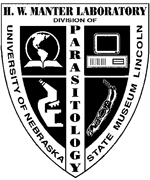Parasitology, Harold W. Manter Laboratory of

Harold W. Manter Laboratory of Parasitology: Library Materials
Document Type
Article
Date of this Version
2010
Citation
Open Ornithology Journal (2010) 3: 41-71.
Also available at https://benthamopen.com/contents/pdf/TOOENIJ/TOOENIJ-3-41.pdf
Abstract
Birds are plagued by an impressive diversity of ectoparasites, ranging from feather-feeding lice, to feather-degrading bacteria. Many of these ectoparasites have severe negative effects on host fitness. It is therefore not surprising that selection on birds has favored a variety of possible adaptations for dealing with ectoparasites. The functional significance of some of these defenses has been well documented. Others have barely been studied, much less tested rigorously. In this article we review the evidence--or lack thereof--for many of the purported mechanisms birds have for dealing with ectoparasites. We concentrate on features of the plumage and its components, as well as anti-parasite behaviors. In some cases, we present original data from our own recent work. We make recommendations for future studies that could improve our understanding of this poorly known aspect of avian biology.
Included in
Behavior and Ethology Commons, Biodiversity Commons, Ornithology Commons, Parasitology Commons


Comments
Copyright 2010, the authors. Open access material
License: Creative Commons Attribution-NonCommerical 3.0 (CC BY-NC 3.0)